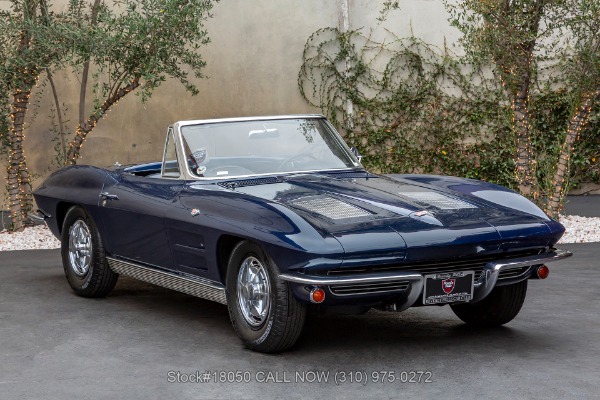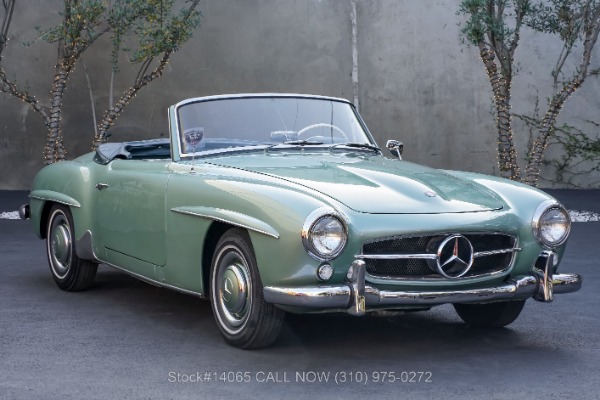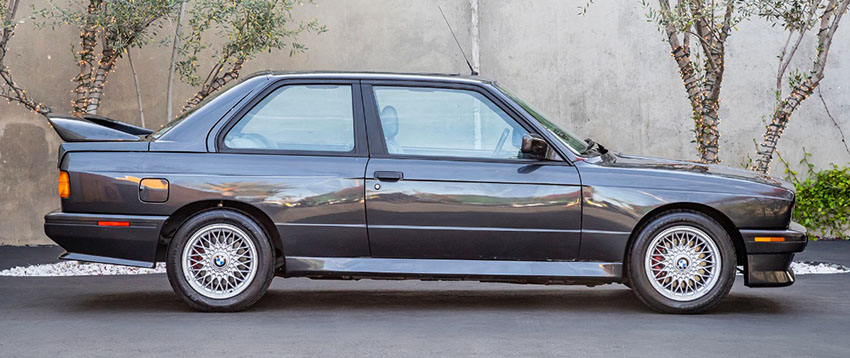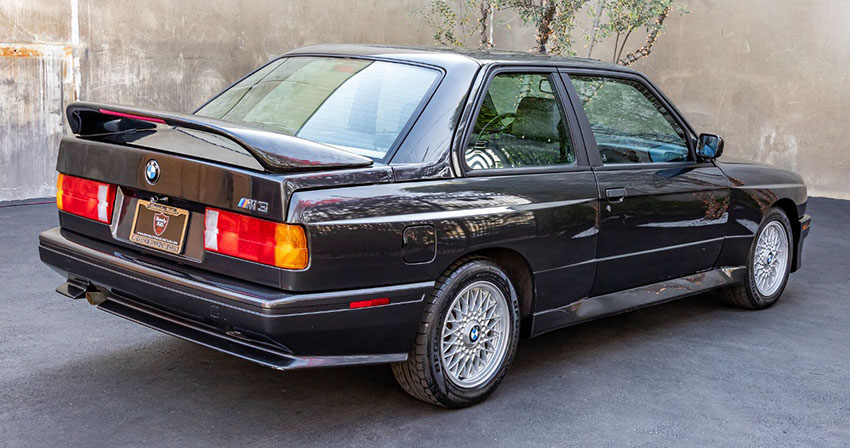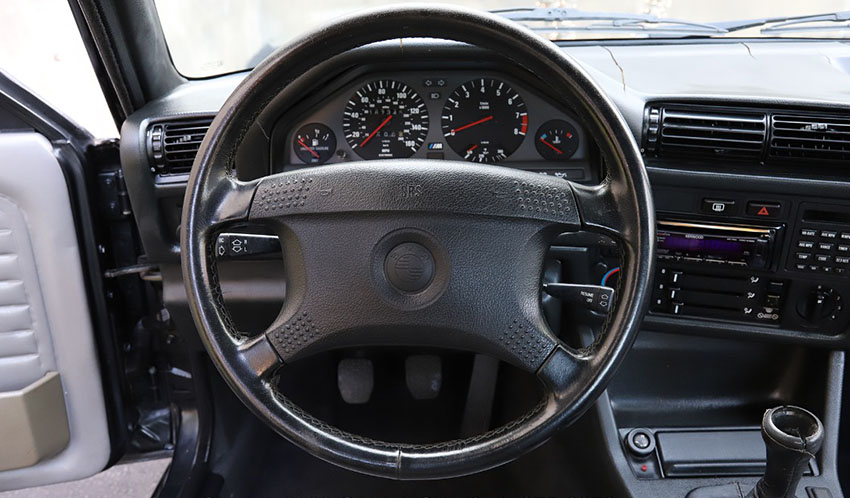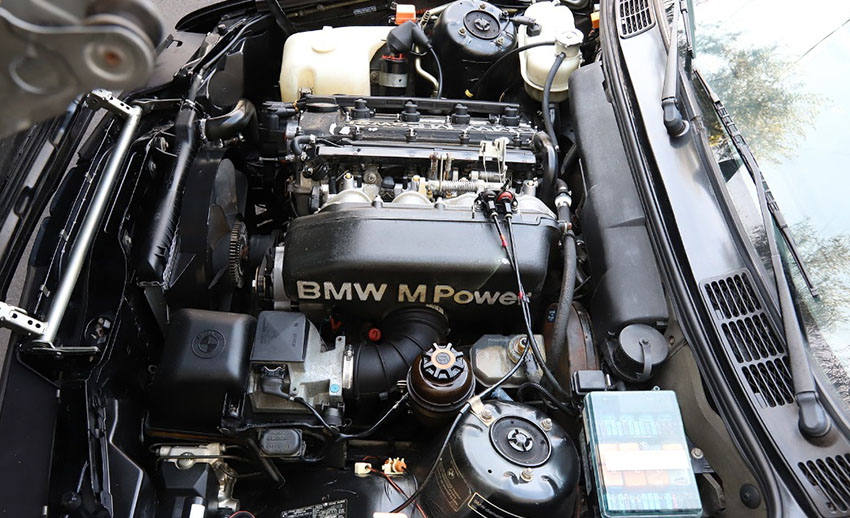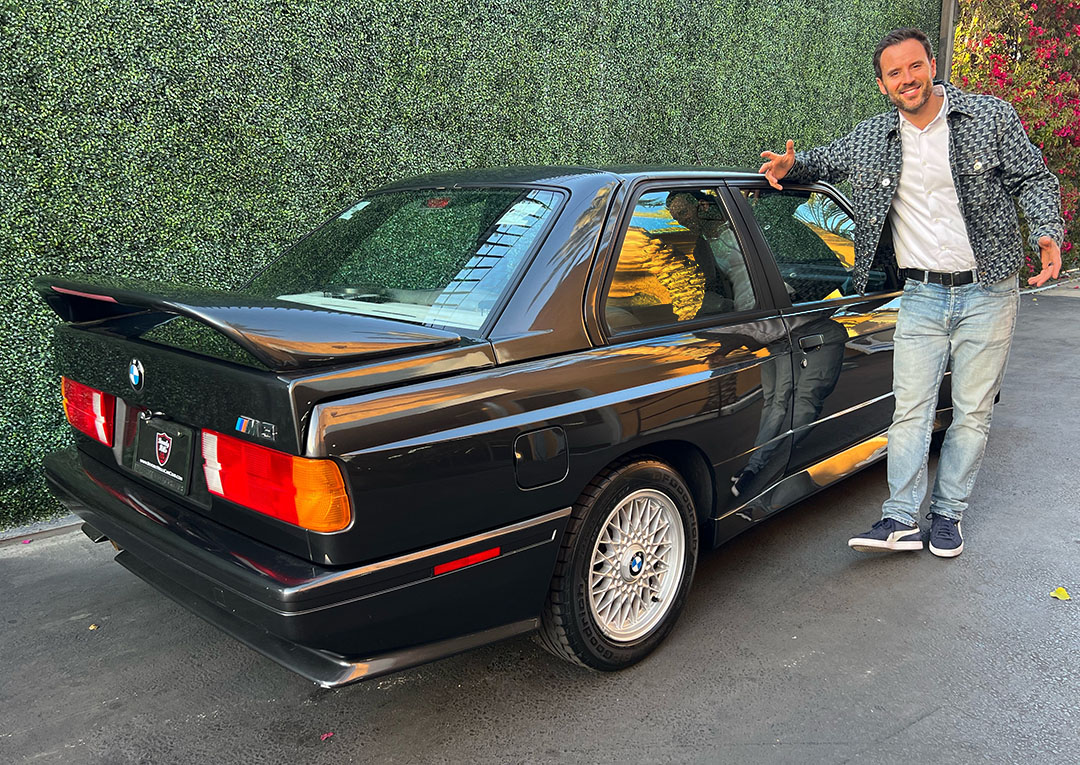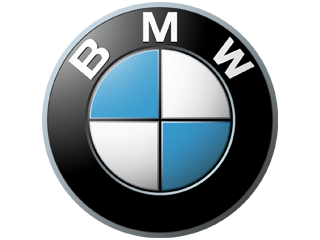Search Inventory
 0
0
Car Tales: One Of The Greatest Drivers Cars Of All-Time, BMW M3 5-Speed
With utter justification: like a street-legal track racer, the BMW M3 5-Speed is truly one of the great cars.
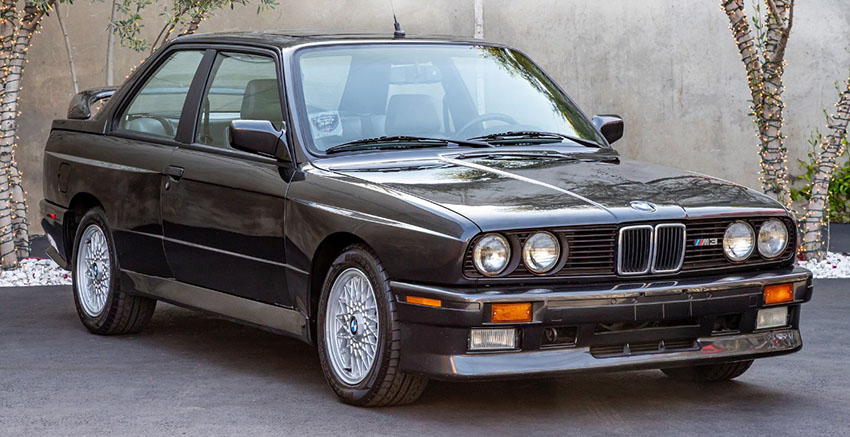
The BMW M3 5-Speed has a cult status which is utterly irreplaceable. If you really like to drive, the M3 takes matters even further. Behind the wheel of a car like this, you feel you are traveling in time, taken back to the early 1990s, when the model we presently have at Beverly Hills Car Club was made – 1991, to be precise.
Buyer / Seller Questions? 310-975-0272
You are taking it for an early Sunday morning spin. Which is precisely the feel you always have with the M3: flying ruggedly along in the sunshine on a deserted road that is lightly windstrewn with leaves, the sense of being utterly at one with your vehicle and its wheels and the blacktop.
You could happily be on this drive forever. Of course, as we know, the M3 is a mega-version of the BMW 3-series, incredibly popular in the 1980s, one of the defining consumer icons of the time.
But this beauty, which can go from 0-60 mph in 5.6 seconds and be hitting 130 mph in 26 seconds, is all the same the quintessence of modesty, tucking itself away quietly with no brash flashiness whatsoever: there are no go-faster stripes or decals on this babe. Simply an extremely dignified exterior and interior. Pure class. When you have really got it, you don’t need to shout about it: all you have to do is put your foot on the accelerator pedal and you know what is there.
The story of the BMW M3 began in the cutthroat world of motorsport. BMW wanted a car that could compete in DTM, Deutsche Tourenwagen Masters or German Touring Car Masters, one that would meet the FIA’s Group A regulations. The company settled on their E30 platform as the basis of the new race car. However, they could not simply just produce a one-off car for racing purposes. To meet the FIA’s homologation requirements, they needed to produce 5,000 road-going versions of the competition car.
This was what led them to develop and put into production the first M3 car. As I said, right now we have one of these mythical beasts: a 1991 BMW M3 5-Speed that is finished in its factory color Diamond Black Metallic complemented with a Grey interior.
It comes equipped with a 5-speed manual transmission, inline-four engine, 4-wheel disc brakes, single exhaust outlet, sunroof, quad headlights, front fog lights, four-spoke steering wheel, front/rear spoilers, BFGoodrich tires, alloy wheels, and a spare tire fitted in the trunk. Amenities include air conditioning, cruise control, power windows, power-adjustable seats, dual-side view mirrors, overhead warning light panel, forward-folding front seats, door pockets, grab handles, Kenwood radio, and manufacturer’s literature. This is an extremely charming E30 M3 that is mechanically sound.
Now a fully-fledged appreciating collectors’ item, even the very first BMW M3’s performance data was a benchmark at the time and this remains the case, even today. It was light and fast, the slim weight part of its power. Thanks to racing technology, the engine climbs exactly to the 200 hp mark – and achieves this without a turbocharger or compressor.
Its maximum speed is 6,750 rpm. With the regulated catalytic converter, which was very advanced for its time, the engine only lost a little power down to 195 hp – a still considerable figure.
The heart of the BMW M3 was undoubtedly its sophisticated four-cylinder engine. The basis for this was the two-liter four-cylinder from the then 3 Series, which was completely revised. Among the best features of the original engine were its low weight, high torque and durability. The typical M power treatment included increasing the displacement to 2.3 liters and integrating a four-valve head. This technology was already known in a modified form from the BMW M1 super sports car.
But it wasn’t just the engine of the M3 that featured a special design: the vehicle itself was also fundamentally overhauled. Above all, the designers desired to offload any surplus weight. Accordingly, the front and rear bumpers, side skirts, trunk lid and spoiler were all made from plastic.
And the BMW M3’s C-pillar was flatter and wider than on the two-door 3 Series, improving its aerodynamics. This unmistakable design’s most striking features included wider wheel arches with fenders and the iconic rear wing. All this contributed to the fact that the M3 quickly became the favorite BMW of motorsport enthusiasts.
In production since the mid-1980s, the first M3 arrived in North America for the 1988 model year, BMW’s most extreme compact sports coupe and sedan.
And the M3 always has remained a car aimed at the heart of the enthusiast: great on a track, but utterly at ease whilst hurtling along at autobahn or freeway speeds.
A great piece of engineering that is simultaneously fabulous fun to drive, it’s really hard to compete with.
As we said, one of the 5 Greatest Drivers Cars of All-time: the BMW M3 5-speed.
-Alex Manos, Owner

Get Started!
Welcome!
join our inventory newsletter
Sign-up for our e-mail alerts
join our newsletter
Sign-up for our e-mail alerts
Learn More
or
we buy classic cars
Looking to sell yours?
Contact us
Sell us your car
Pick up from any USA location - Any condition - Top $$$ Paid



